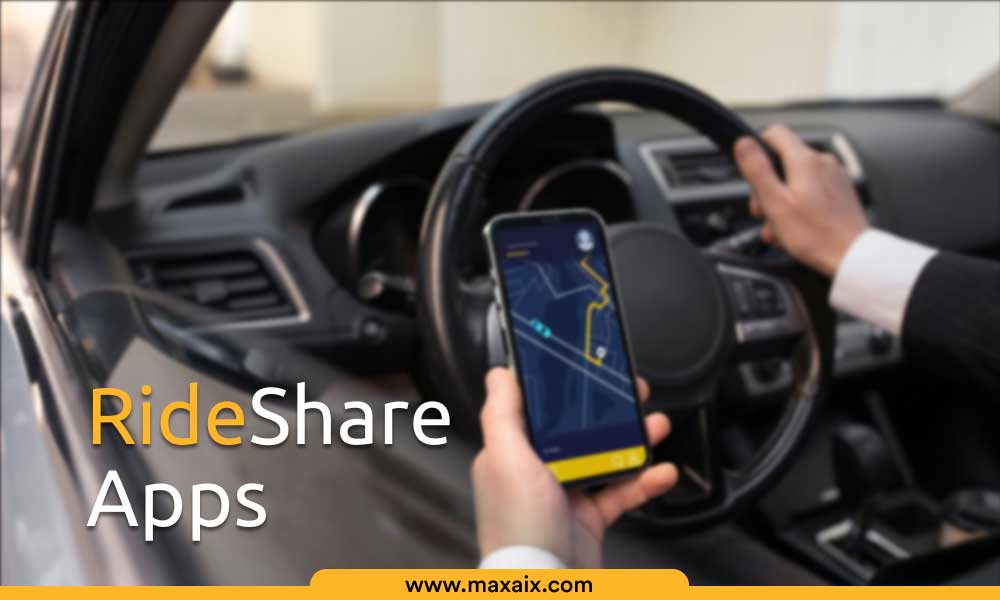10 of the Best Ride Share Apps Available in the Market

What are Rideshare Apps?
Ride-sharing apps have revolutionized urban transportation, offering a convenient and often cost-effective alternative to traditional taxis and public transport. These apps allow users to request rides from drivers who use their vehicles to provide transportation services, often at a lower cost and with greater flexibility than traditional taxi services. The rise of ride-sharing apps has been marked by the advent of technology that connects passengers with drivers via smartphone applications, facilitating easy booking, tracking, and payment processes. This innovation has not only transformed how people move around cities but also impacted urban planning, employment, and the gig economy.
What Is The Impact of Ride Sharing Apps’ Growth on the world of transportation?
Ridesharing and app-supported ride services have changed the landscape of global transport in a significant way.
Global Impact:
Convenience and Accessibility: These ride-sharing applications greatly increase accessibility into remote regions that do not normally have available or well-developed public transportation means.
Reduced Traffic Congestion: These applications promote ridesharing and carpooling thus reducing traffic jams in urban areas.
Economic Opportunities: The growth and development of ridesharing applications have provided new economic and employment opportunities for many drivers, thus giving birth to a gig economy in various countries and regions throughout the globe.
Technological Advancements: The incorporation of GIS with artificial intelligence (AI) combined with machine learning results in advanced efficiency as well as user experience.
Key trends in rideshare apps.
a. Geolocation- Precise location tracking using GPS technology.
Real-time ride matches with nearby drivers.
b. Artificial Intelligence (AI)
Route optimization, price estimation, and predictive algorithms powered by AI.
Enhanced performance and better customer experience.
c. Machine Learning
Historical data-based personal users’ experience.
Constant enhancement of features and recommendations.
d. Electric Vehicles
Greater attention to green forms of transport.
Ridesharing and integration of electric vehicles in fleets.
How Maxaix uses AI to build great ridesharing apps
- Predictive Analytics: Maxaix uses predictive analysis to forecast demand, assign drivers appropriately, and minimize waiting time.
- Route Optimization: AI programs study traffic flows and recommend the best possible ways for drivers and hence improve general efficiency.
- Personalized Experiences: Personalization in respect of the rides is based on the usage of artificial intelligence (AI).
- Safety Enhancements: This helps make the rideshare environment safer as the AI algorithms monitor driver behavior and point out any anomalies.
- Dynamic Pricing Strategies: Peak hours are periods when the demand for resources is high thus the price increases. The aim of the organization is also to minimize the cost at low demand periods thus the pricing is reduced.
10 Best Rideshare Apps
a. Uber: Leading Ridesharing Giant Globally
- Global Presence: Serves more than 900 localities across the globe.
- Diverse Services: Provides ride-sharing, food delivery, and freight transportation.
- Popularity: Dominates the global rideshare market.
b. Lyft: Everywhere, Anytime Rides
- US and Canada Focus: The market power of Lyft is evident in its strong presence in the US and Canada.
- Community Programs: Engagement of people’s community driver and rider.
c. DiDi: World’s number one mobility technology platform.
- Global Expansion: Found all over Asia, Latin America, and Australia.
- Innovative Features: Safety features, and route optimization based on artificial intelligence.
- Market Dominance: Largest rideshare platform in China.
d. Cabify: Leading Ridesharing App From Spain
- European Presence: Significant influence in Spain, Portugal, and the Latin American region.
- Luxury Options: Differentiates with premium vehicle options.
- Sustainability: Focus on carbon-neutral operations.
e. Curb: Taxi App in the US
- Traditional Taxi Integration: Links users to accredited taxi drivers.
- US Focus: Mainly concentrated in major American cities.
- Reliability: Emphasizes safety and reliability.
f. BlaBlaCar: An Efficient, safe, and affordable carpooling app.
- Carpooling Focus: It links drivers with unwanted seats to travelers heading in the same direction.
- Global Reach: It has also made a presence in Europe, Mexico, and India.
- Affordability: Affordable way of traveling long distances.
g. Bolt: Europe’s Leading Ride-Sharing Platforms
- European Dominance: Strong presence in European cities.
- Affordability: Competitive pricing and transparent fees.
- Driver-Focused: Better pay per mile to drivers.
h. Careem: Dubai offers the best rideshare app.
- Middle East Presence: Dominant in Middle Eastern countries.
- Diverse Services: Offers bike and food deliveries in addition to rideshares.
i. Ola: A Ridesharing App From India
- Indian Dominance: Largest rideshare platform in India.
- Diverse Services: Diversifies into Bike taxis, auto-rickshaws, and e-vehicles.
j. inDrive: Fast, affordable rides!
- Emerging Contender: Fair pricing and fast services gaining traction.
- User-Centric Approach: Prioritizes user satisfaction.
5 reasons why people like and use these apps.
- Convenience: Tap into instant transport via your mobile phone.
- Cost-Effectiveness: Usually cheaper than regular taxis, especially for a shared ride.
- Safety Features: Real-time tracking as well as advanced safety features like drivers’ performance rate.
- User-Friendly Interfaces: Simple applications for mobile phones with smooth usage and payment.
- Innovative Services: Apps do not stop at ridesharing but also provide other services such as courier services and carpooling.
Frequently Asked Questions
What characteristics should compose a ridesharing program?
GPS tracking, a user profile, payment, driver’s rating, and review.
How many months do I need to create an on-demand ride-sharing platform?
The time of development normally takes anywhere between 2 to 4 months.
What are the challenges faced by rideshare application developers?
Compliance challenges, rivalry, and passenger security as well as driver protection.
What measures should I take to secure user data in my rideshare app?
Use strong encryption, carry out routine security assessments, and follow the data privacy laws.
How do rideshare apps make money?
Driving commission, peak hour surge pricing, and partnerships (for instance, food delivery).
What measures are in place within ride-share operations to maintain good drivers?
Continuous background checks on the drivers, their rating, and monitoring or periodic review of their performance.
What should be included in effective rideshare app marketing strategies?
Digital targeted marketing, referral programs, and partnerships with local businesses.
What are the different ways of resolving complaints against rideshare apps?
Customer service is provided by specialists, in-app chat, and honest feedback.
What opportunities exist during rideshare app development in terms of customization?
Developers can allow for customizing of features, branding as well as user interfaces that can be tailored to suit certain business requirements.


